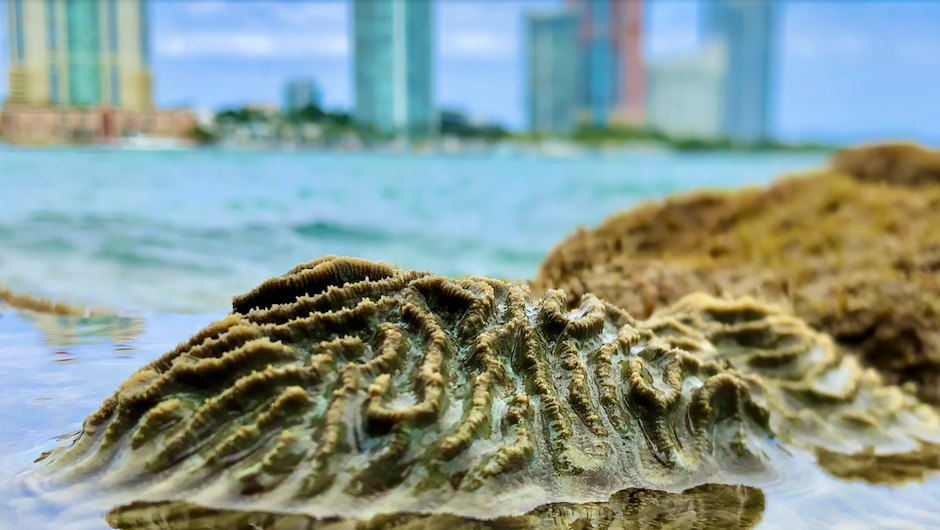Researchers at the University of Miami Cooperative Institute of Marine and Atmospheric Studies (CIMAS) and NOAA’s Atlantic Oceanographic and Meteorological Laboratory (AOML) and partners found the corals within the highly urbanized environment around the Port of Miami show great resilience against unfavorable conditions, such as poor water quality, excess nutrients, high temperatures, high salinity, and low pH levels.
The Port of Miami is a bustling waterway with large cruise and cargo ships, ferries, fishing vessels, and recreational boats. These corals have built strong and diverse communities on human-made substrates, such as seawalls and discarded objects, according to the study published in Nature’s Scientific Reports.
“These corals are important because they are rare and threatened, but also because they demonstrate surprising resilience that can teach us about the future of coral reef ecosystems today,” said Michael Studivan, a co-author of the study and a scientist at the Rosenstiel School’s Cooperative Institute for Marine and Atmospheric Studies. “Corals persist despite conditions that would harm many reef species, including extreme temperatures, acidification, and poor water quality.
Scientists visited the Port of Miami over a three-year period beginning in 2018 to monitor environmental conditions and measure coral community dynamics. The research team used a suite of state-of-the-art instruments that included sub-surface autonomous samplers designed at CIMAS/AOML and coral photomosaics.
The samplers monitored the temperature, pH, oxygen, carbonate chemistry, light, and tidal flow at three reef sites. Photomosaics consisting of thousands of high-resolution underwater photos stitched together created detailed maps of these habitats to characterize their coral cover, spread, and species diversity.
Through a collaboration with Coral Morphologic’s Coral City Camera, live underwater cameras were placed at an urban coral nursery site, which helped scientists to identify unique fish species visiting the site, including the endangered smalltooth sawfish.
“The Port of Miami is quite different from the places where we normally work. Everything is artificial, engineered, and constructed,” said Ian Enochs, a research ecologist at AOML and lead author of the new study. “Somehow, nature has found a way to persist even in the most unnatural of environments.”
The study, titled “Coral persistence despite marginal conditions in the Port of Miami,” was published in the April issue of Scientific Reports. The authors include Ian C. Enochs, from NOAA AOML, Michael S. Studivan, Graham Kolodziej from CIMAS, Colin Foord from Coral Morphologic, Isabelle Basden and Albert Boyd from CIMAS, Nathan Formel from Woods Hole Oceanographic Institution, Amanda Kirkland from the University of New Orleans, Ewelina Rubin from the University of Florida, Mike Jankulak and Ian Smith from CIMAS, Christopher R. Kelble from NOAA AOML, and Derek P. Manzello from NOAA.
The research was funded by NOAA OAR’s ‘Omics Initiative with additional support provided by NOAA’s Ocean Acidification Program and Coral Reef Conservation Program. The results of this study were only possible through a close collaboration among NOAA AOML, the University of Miami Rosenstiel School’s Cooperative Institute for Marine and Atmospheric Studies, Coral Morphologic and the field efforts of numerous scuba divers and laboratory technicians.
-- Adapted from a NOAA web article

